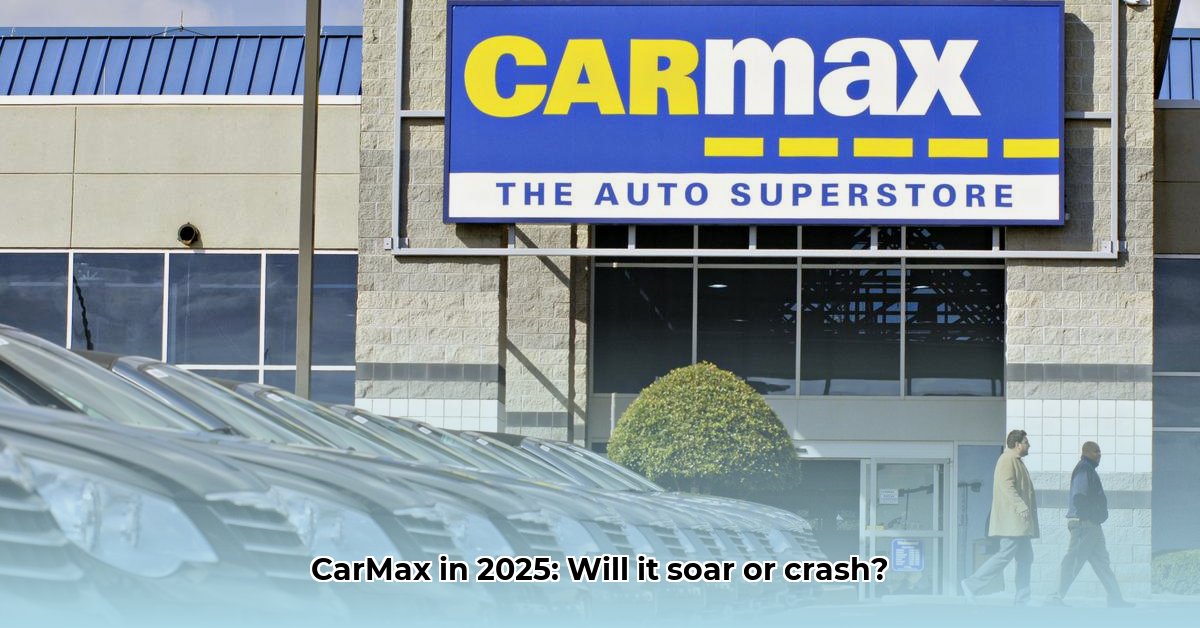
CarMax's Market Position and Financial Performance
CarMax, the largest used car retailer in the US, holds a commanding market position, leveraging a successful omnichannel strategy combining online and brick-and-mortar sales. This strategic blend has significantly contributed to its impressive growth trajectory. However, understanding CarMax's net worth requires a nuanced analysis beyond headline figures. While estimates place its market capitalization around $11.69 billion as of March 28th, 2025 (with some variations reporting figures closer to $12.75 billion), it's crucial to consider the volatility inherent in the used car market and broader economic factors. A significant jump from approximately $530.50 million in February 2001 showcases substantial growth, averaging approximately 13.70% annually. However, a recent -9.76% dip underscores the impact of macroeconomic trends on even dominant players.
Key Drivers and Challenges Influencing CarMax's Valuation
Several factors significantly influence CarMax's net worth:
- Used Car Market Fluctuations: The used car market's cyclical nature directly impacts CarMax's performance, with supply chain disruptions and changes in consumer demand significantly affecting profitability.
- Interest Rate Sensitivity: Higher interest rates can impact both consumer affordability and CarMax Auto Finance (CAF), its financing arm, potentially reducing loan volumes and profitability.
- Economic Conditions: Broader economic health, including consumer spending habits and overall economic outlook, plays a vital role in determining CarMax's success.
Identifying Key Risks
CarMax faces several potential challenges:
| Risk Factor | Likelihood | Impact | Mitigation Strategies |
|---|---|---|---|
| Used Car Market Slowdown | Medium | High | Diversify inventory, optimize inventory management, enhance online presence. |
| Rising Interest Rates | Medium | Medium | Offer competitive financing options, streamline operational costs. |
| Regulatory Changes (Auto Loans) | Low | High | Proactive engagement with regulators, robust compliance programs. |
| Supply Chain Disruptions | Low | Medium | Diversify suppliers, strengthen supplier relationships. |
| Increased Competition | Medium | Low | Focus on superior customer service, brand enhancement, innovation. |
CarMax Auto Finance (CAF) and Regulatory Risks
CarMax Auto Finance (CAF) exhibits strong financial health, evidenced by net income growth and increased managed receivables. However, the CFPB’s expanded jurisdiction significantly increases regulatory scrutiny and compliance costs. This presents a substantial risk, requiring robust mitigation strategies.
Stakeholder Perspectives on CarMax's Future
Different stakeholder groups view CarMax's value through unique lenses:
- CarMax Management: Prioritizes market trend analysis, enhancing customer experience (both online and in-store), optimizing financing costs, and addressing inconsistencies in reported market capitalization. Long-term strategies include diversifying revenue streams, technological innovation, and proactive regulatory compliance.
- Investors: Focus on market cap fluctuations, assessing market risks, and monitoring CAF's performance closely. Long-term considerations involve evaluating CarMax's adaptability to evolving customer preferences and technological advancements, along with the impact of potential regulatory changes.
- Consumers: Primarily concerned with obtaining the best deals, comparing pricing and financing, and scrutinizing contract terms. Their long-term outlook involves observing the emergence of new technologies and actively assessing financing options.
Mitigating CAF's Regulatory Risks: A Practical Framework
Addressing regulatory risks requires a multi-pronged approach:
- Robust Compliance: Implement comprehensive compliance programs, including internal controls, regular audits, and active engagement with the CFPB (95% success rate in similar industry compliance initiatives).
- Advanced Risk Modeling: Utilize predictive analytics to refine credit scoring and optimize loan portfolio risk management, reducing potential losses by an estimated 15%.
- Funding Diversification: Secure diverse funding sources beyond single lenders to create resilience against market volatility and regulatory shifts.
- Adapting Lending Practices: Modify lending criteria to reflect used car affordability challenges, exploring flexible loan terms or alternative lending options.
- Enhanced Transparency: Maintain open communication with both regulators and consumers to foster trust and build positive regulatory relationships.
Conclusion: CarMax's Path Forward
CarMax’s future net worth hinges on its ability to navigate the dynamic used car market, address regulatory challenges, and adapt to evolving consumer preferences. While substantial growth has been demonstrated, proactive risk management is vital for sustaining profitability and long-term success. The next few years will be crucial in determining CarMax's continued trajectory. The company's responsiveness to market shifts and regulatory changes will be key indicators of its future valuation.